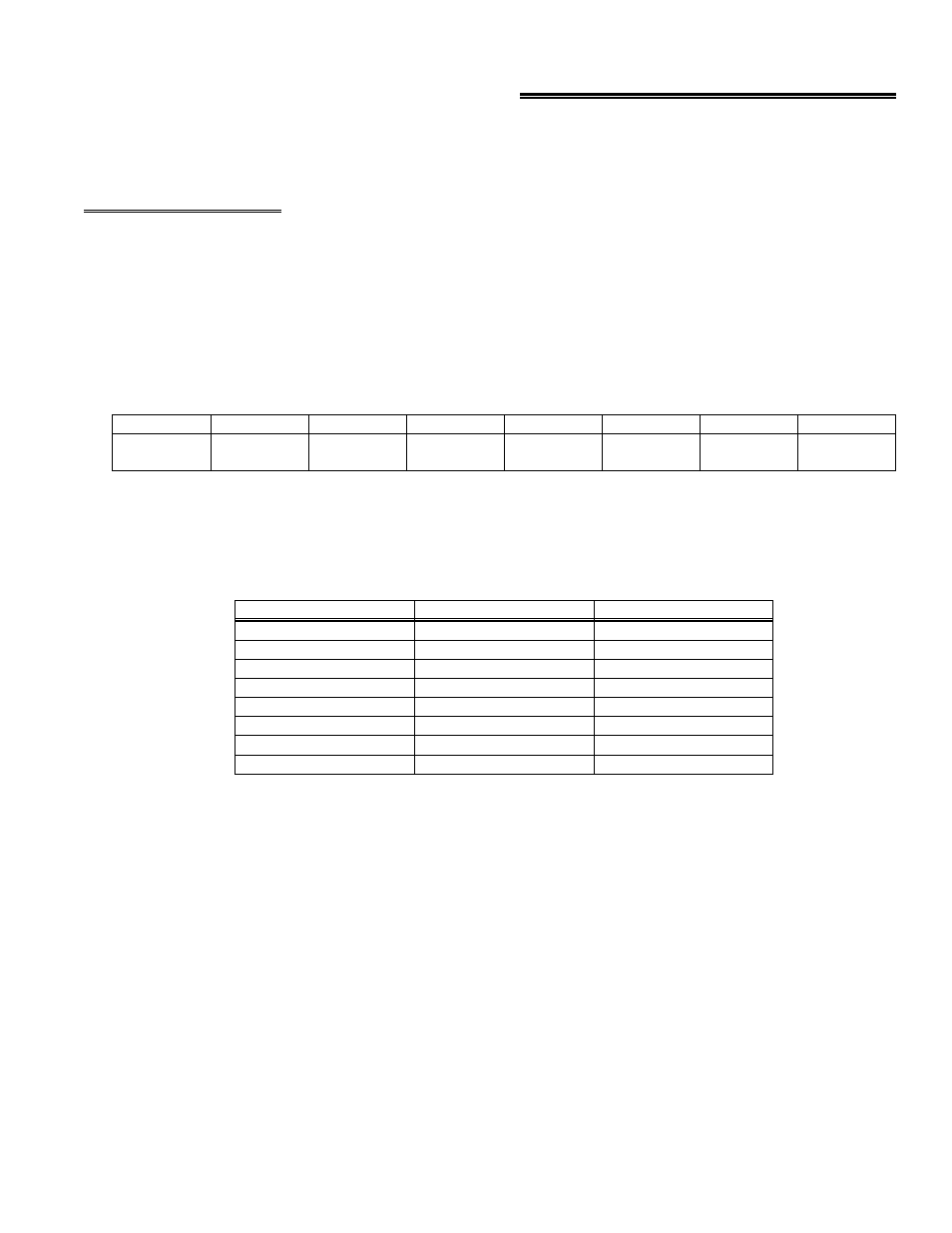6 cio-das08-aox architecture – Measurement Computing CIO-DAS08-AOH User Manual
Page 13

6 CIO-DAS08-AOx ARCHITECTURE
All of the programmable functions of the CIO-DAS08-AOx are accessible through the control and data registers, which are
explained here.
6.1 REGISTER LAYOUT
The CIO-DAS08-AOx is controlled and monitored by writing to and reading from 16 consecutive 8-bit I/O addresses. The
first address, or BASE ADDRESS, is determined by setting a bank of switches on the board.
Register manipulation is best left to experienced programmers as most of the possible functions are implemented in easy to
use Universal Library™.
The register descriptions use the following format:
CH1
CH2
CH4
CH8
A/D12
LSB
A/D11
A/D10
A/D9
0
1
2
3
4
5
6
7
The numbers along the top row are the bit positions within the 8-bit byte and the numbers and symbols in the bottom row are
the functions associated with that bit.
To write to or read from a register in decimal or hexadecimal, the bit weights in Table 6-1 apply:
Table 6-1. Byte Bit Weights
80
128
7
40
64
6
20
32
5
10
16
4
8
8
3
4
4
2
2
2
1
1
1
0
HEX VALUE
DECIMAL VALUE
BIT POSITION
To write control words or data to a register, the individual bits must be set to 0 or 1 then combined to form a byte. Data read
from registers must be analyzed to determine which bits are on or off.
The method of programming required to set/read bits from bytes is beyond the scope of this manual. It will be covered in
most Introduction To Programming books, available from a bookstore.
In summary form, the registers and their function are listed on Table 6-2. Within each register are eight bits which may
constitute a byte of data or they may be eight individual bit set/read functions.
9
